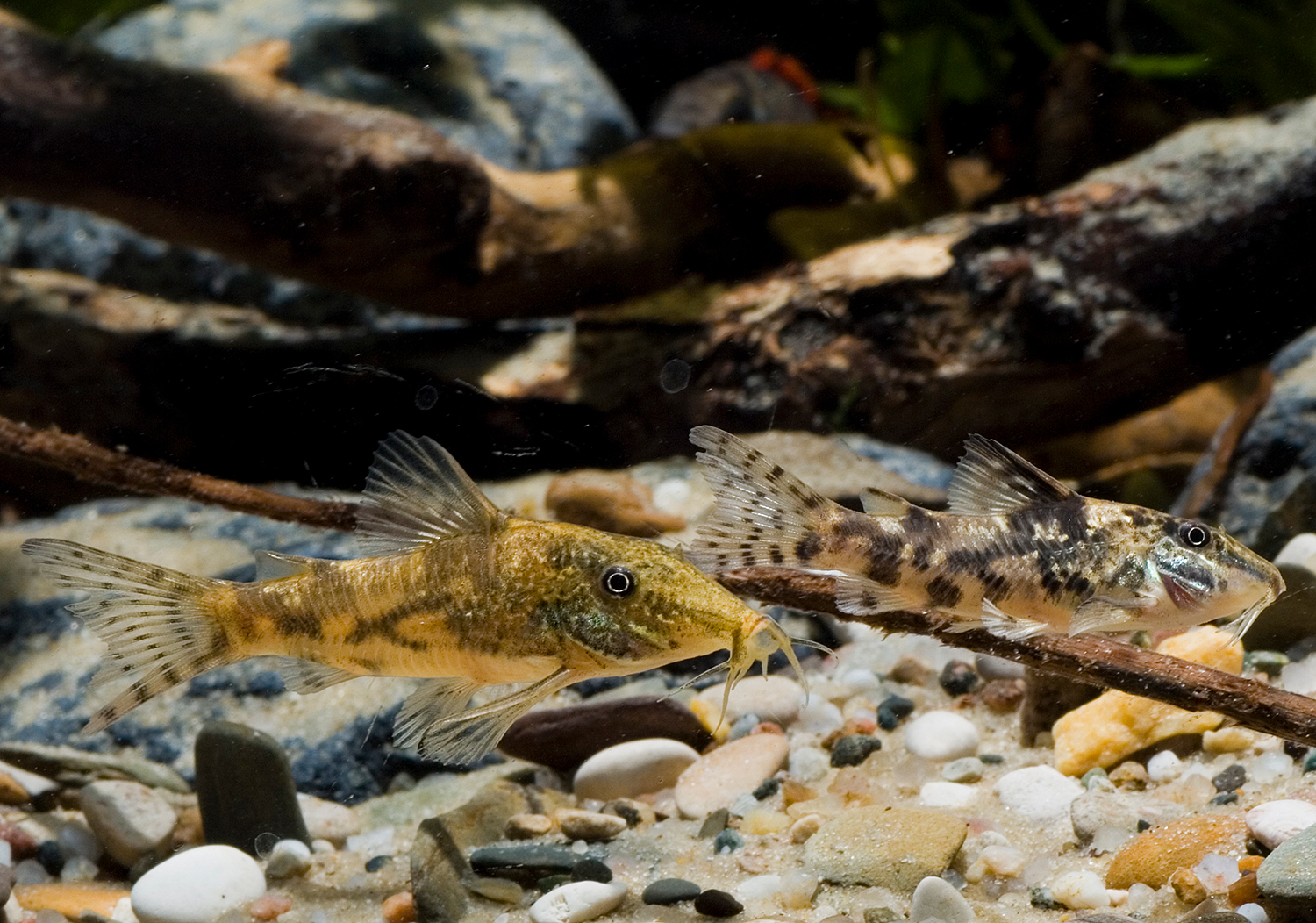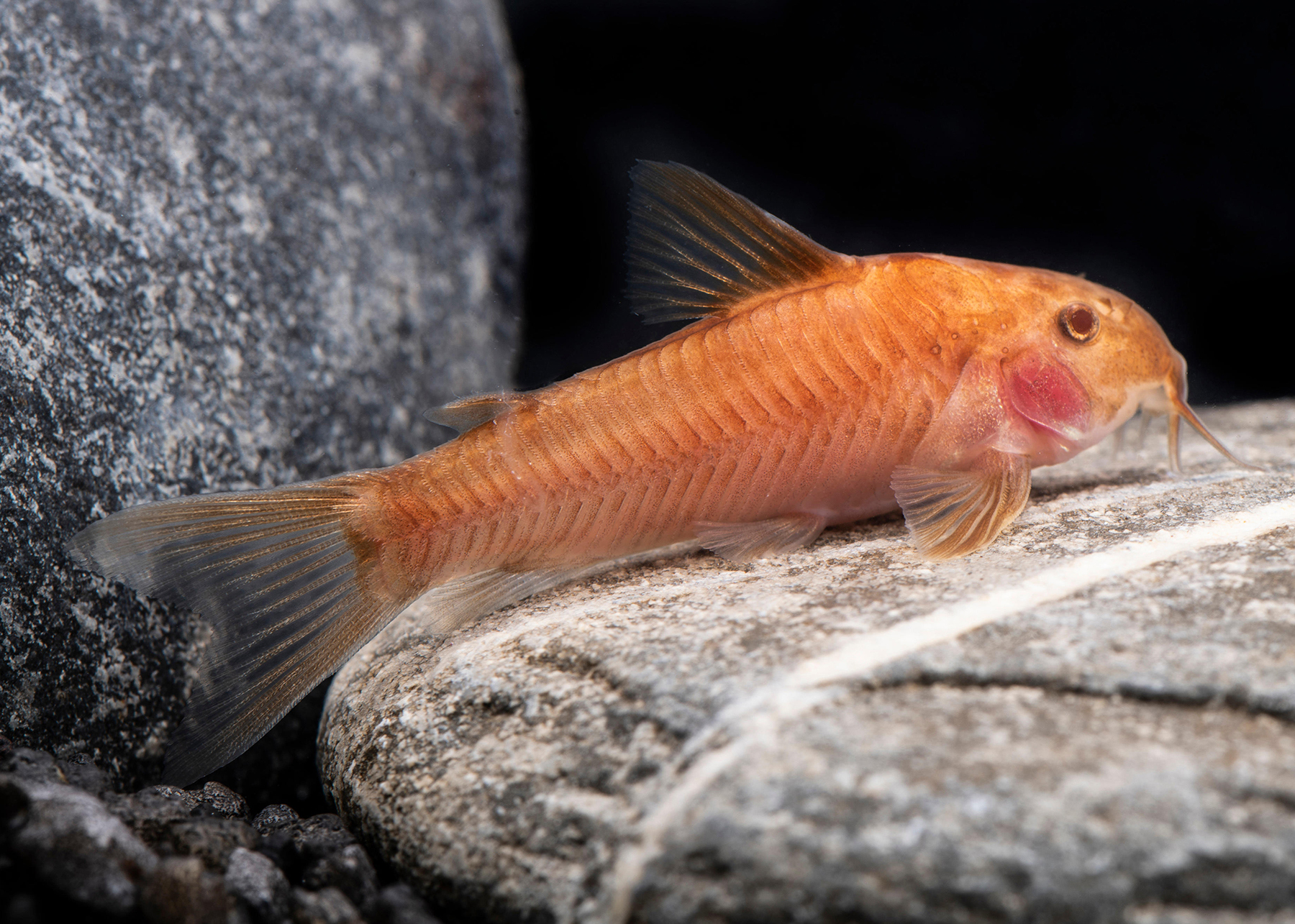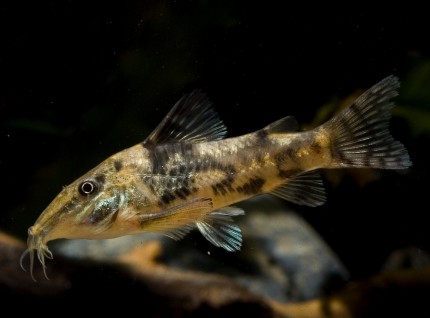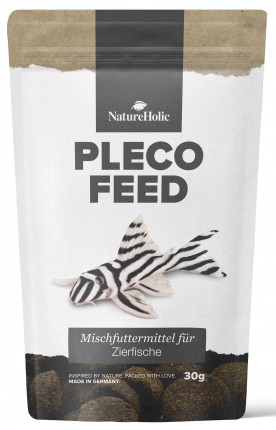Scleromystax & Aspidoras - The somewhat different armoured catfish!
Table of contents
The majority of catfish kept in our aquariums belong to the Callichthyidae (armoured catfish) and Loricariidae (loricariid catfish) families. Only a small part is dedicated to catfish families from the African or Asian region. Only a few genera and their species can be found in our aquariums in the group of callus catfishes, which also belong to the armoured catfishes. Even among the better-known species of armoured catfish, 90% of them are Corydoras.
Not many species have been scientifically identified!
Of the 370 or so species of Corydoras (all genera) known to us, only about 50% are scientifically described valid species. An English Corydoras enthusiast (Ian Fuller) has developed his own CW-numbering system parallel to the C-numbering system existing in Germany. The main idea of a numbering system was that an as yet unknown Corydoras species could be addressed with the same name or code number throughout the world until it was identified, thus avoiding a confusion of names.
In the course of the years, the C-system reached an impressive number of 158 species, the last number being assigned to a cory catfish of the genus Aspidoras. In the meantime, 32 of these C-numbers have been scientifically described or could finally be positively assigned to an already existing species. The CW code system currently contains 170 species (as of 2022). As with the C code system, numbers are also assigned to other armoured catfish genera, including the genera Aspidoras, Brochis and Scleromystax in addition to Corydoras.
 Scabrous Corydoras - Scleromystax barbatus
Scabrous Corydoras - Scleromystax barbatus There is a whole series of corydoras whose names are well known, but animals of this species have never or extremely rarely appeared in Germany. This again has different reasons. Decades can pass from the first description to the first import of the described species. During this time nature changes, we change nature and sometimes new national borders are established. Also, the type localities may be located in areas that are difficult to access or even restricted.
All this makes the search for our desired animals more difficult. There are real phantoms in aquaristics where only drawings exist. One such phantom has been dissolved in recent years. The armoured catfish Corydoras weitzmani, which was only introduced in 2005 by Hoffmann & Hoffmann. This species was described by Nijssen in 1971, the first import was in 2005. 34 years lie in between! There are certainly other examples with longer time spans.
Scleromystax differs from the others
A genus whose species differ visually and also in behaviour from the Corydoras and Brochis is Scleromystax. In books or aquaristic magazines of the last 30 years you will only very rarely come across the genus name Scleromystax. This is not because corydoras of this South American genus are extremely rare, quite the opposite. The best-known representative is a permanent fixture in the aquarium hobby. It is just that the Schabrackenpanzerwels, as it is called in German, is found in many reports as Corydoras barbatus.
As with any genus, new findings and new species can bring about a scientific revision. Such a revision can sometimes also mean "moving" a species to a different or newly created genus. This has happened several times in the case of our well-known pinnipeds.
Origin and characteristics
The genus Scleromystax Günther, 1864 was originally a subgenus of Callichthys. In a revision of the Callichthyidae by Gosline ,1940 the genus was retracted and the species within it were transferred to the genus Corydoras. The Brazilian ichthyologist Marcello Britto, 2003 revised the subfamily of Corydoradinae, Hoedeman, 1952. In this work, the genus Scleromystax was revalidated. The following genus-typical characteristics of Scleromystax are mentioned in this work:
- spindle-shaped body with a pointed snout.
- males develop skin teeth on the sides of the head (except S.prionotos)
- in males the pectoral and dorsal fins are elongated
- a reduced ossified area of the first pectoral fin spine, which is distinctly shorter than the following soft rays
The rainforest located on the east coast of Brazil - the Mata Atlântica - is home to many endemic animal and plant species. The tropical forest, which once comprised 17 states, is separated from the Amazon rainforest by savannah and dry areas. The states from which armoured catfish of the genus Scleromystax are known are Bahia, Minas Gerais, Espírito Santo, Rio de Janeiro, São Paulo, Santa Catarina and Rio Grande do Sul, running from north to south.
The best known are probably the states of Rio de Janeiro and São Paulo with the large cities of the same name, which are growing ever further inland and taking up territory. The armoured catfish of the genus Scleromystax inhabit this Mata Atlântica. The sometimes very long distance to the equator is reflected in distinct seasons with temperatures ranging from 20 to 25°C. This should be taken into account when keeping Scleromystax. This should be taken into account when keeping Scleromystax, permanently high temperatures cause the species to age faster.
Keeping and breeding
They are very well suited for unheated aquariums. Our best known and at the same time one of the most beautiful in its genus is the Scleromystax. The distribution area of S.barbatus in Brazil, lies in the states of São Paulo, Paraná, Santa Catarina, Rio de Janeiro - in former times abundant in all clear water streams of the mountainous regions, today only (due to extreme pollution) restricted to the upper reaches.
Much has been reported about the breeding of Scleromystax barbatus, here are just the most important key points. The points are similar to those of Scleromystax kronei and Scleromystax sp. CW 38. The reproduction and points of Scleromystax prionotos stand out a little. This is similar to many Corydoras species.
For Scleromystax barbartus and S.kronei the optimal temperature for care and breeding is between 20-23°C. For breeding, until after hatching, a pH below neutral is very useful. I achieve good results with a pH of 6.5. Some breeders go as low as pH 6 and use treated water. After mating, a spawning site is chosen. Both sexes swim to this site again and again, and it is cleaned before the eggs are laid.
Suitable spawning sites are almost always near the water surface. Current-rich places are preferred. They swim to this spot again and again, and after a few hours the clutch of eggs forms a grape-shaped structure. The total number of eggs varies, depending on the size and condition of the female, between 70-120 spawning grains. The spawn grains, which are on average 2mm in size, stick very strongly to the substrate even hours after laying. In my case, 90% of them were on the aquarium glass.
It is advisable to collect the eggs and breed them separately. For the Scleromystax I add an agent against spawn fungus to the water. Scleromystax sp. CW38 was a little more difficult to rear, here the temperature is a little higher between 23-25°C. I also had to add the agent against spawning fungus. I also had to overdose the spawn fungicide a bit to prevent spawn fungus. At an average temperature of 22-23°C, the larvae hatch after 5 days and feed on the yolk sac for another 4 days.
Juveniles
Live food is ideal as the first food, small Grindal will cope as well as Artemia nauplii. Breeding is also possible with a good dry food preparation, but care must be taken to avoid food residues. Leftover food is generally a good breeding ground for bacteria. These in turn can severely damage the fins of the young fish. If the damage is too severe, the fry may stop eating and die.
After 5 more days the fry get a dark line, this runs parallel on each side from the tip of the snout across the eye. A vertical stripe runs across the dorsal fin. This is gradually followed by several spots spread over the body. The checkered pattern on the body is typical for many Scleromystax juveniles. The typical colouring develops only after about 3 cm.
Descent of the genera
Based on genetic analyses, Alexandrou et al. 2011 established a phylogenetic tree. (Competition and phylogeny determine community structure in Müllerian co-mimmics)
Based on these studies, the armoured catfishes have been divided into lineages. Lineage 2 for the genus Aspidoras (but here without the well-known Aspidoras pauciradiatus), lineage 3 contains representatives of the genus Scleromystax.
Since corydoras of the genus Aspidoras also have a strongly reduced first pectoral fin ray, both genera were placed by Britto in a new tribus, Aspidoradini. The appearance of representatives of both genera is also very similar in some species.
Aspidoras
The German name Schmerlenpanzerwelse was suggested by Knaack (1966) in a report in the DATZ for a catfish he introduced. At that time it was Aspidoras rochai. Wolf (1987) went one step further by suggesting the name loach catfish for the entire genus. The untypical elongated shape for an armoured catfish and the sinuous movements of these catfishes was probably the impetus for this naming.
Except for a few species, all Aspidoras look the same to the layman. Even for aquarists who have been dealing with these catfishes for a long time, a clear identification of the species is difficult and only with information on where the animals were found is a more precise determination possible. Nevertheless, a few species stand out due to certain characteristics in the body markings and are thus easier to distinguish from the other species.
 Red loach catfish - Aspidoras
Red loach catfish - Aspidoras Catfish from the genus Aspidoras are not part of the standard assortment in pet shops, if they are, then it is usually the smallest of its genus, Aspidoras pauciradiatus. Sometimes other species, usually difficult to identify, make it to Germany. These are offered with a wide variety of names, such as Aspidoras sp. Bahia, Aspidoras sp. Sao Paulo or Aspidoras sp. Araguaia.
As you can tell from the names, they are river, city or state species in Brazil. All species described so far (24 species) and also many not yet scientifically described species (11 "species" with C and CW number) of this genus originate from Brazil. They are concentrated in a rather narrowly defined area. Mostly it is the southern and eastern states that are given as localities.
Does the care of Aspidoras differ?
The care of the Aspidoras is not more difficult than that of many Corydoras species. A few small additional points should nevertheless be taken into account. Small groups of up to 10 animals can be kept in a standard 60 litre aquarium. The group should not be much smaller, Aspidoras are very social. Again and again you can observe that the animals "greet" each other in the group with their barbels. To my knowledge, the exact background of this behaviour has not yet been considered. As substrate I recommend fine gravel (2mm) mixed with sand. An additional small flow pump is advantageous for the filter, it provides the necessary water movement. A constant current in a section of the aquarium is necessary for the Aspidoras, which need a lot of oxygen. A seasonal temperature fluctuation between 22-26°C and a pH value between 6-6.5 contributes positively to their well-being and reproduction.
Nutrition and breeding
One thing is certain, an Aspidoras cannot starve as long as it is healthy. Aspidoras are not fastidious eaters, whether it is dry food in tablet, flake or granule form, frozen food or live food. Everything is found and eaten in a flash If fed a varied diet with the above-mentioned food, the female loach catfish will quickly spawn. Spawning is then triggered by a larger water change (50 percent of the tank contents) or by increasing the current. The spawning process in Aspidoras species is the same as in the genus Corydoras, but much more hectic.
The strongly adhesive eggs are 99% attached to the most current-rich areas of the aquarium. For optimal rearing and to ensure an optimal result at hatching, it is advisable to time the clutches separately and raise the fry.
At 25°C the first larvae hatched after 3 days. Another two days later the yolk sac is used up and the small catfish take Artemia nauplii, Grindal or fine dry food preparation as their first food. Young Aspidoras can eat a huge amount of food, so growth is very rapid in the first few months. Further rearing does not cause any more problems.
Gradually the food is adapted to the growth of the Aspidoras. But even without collecting the clutches of eggs, young fish will always emerge in the tank on their own.


